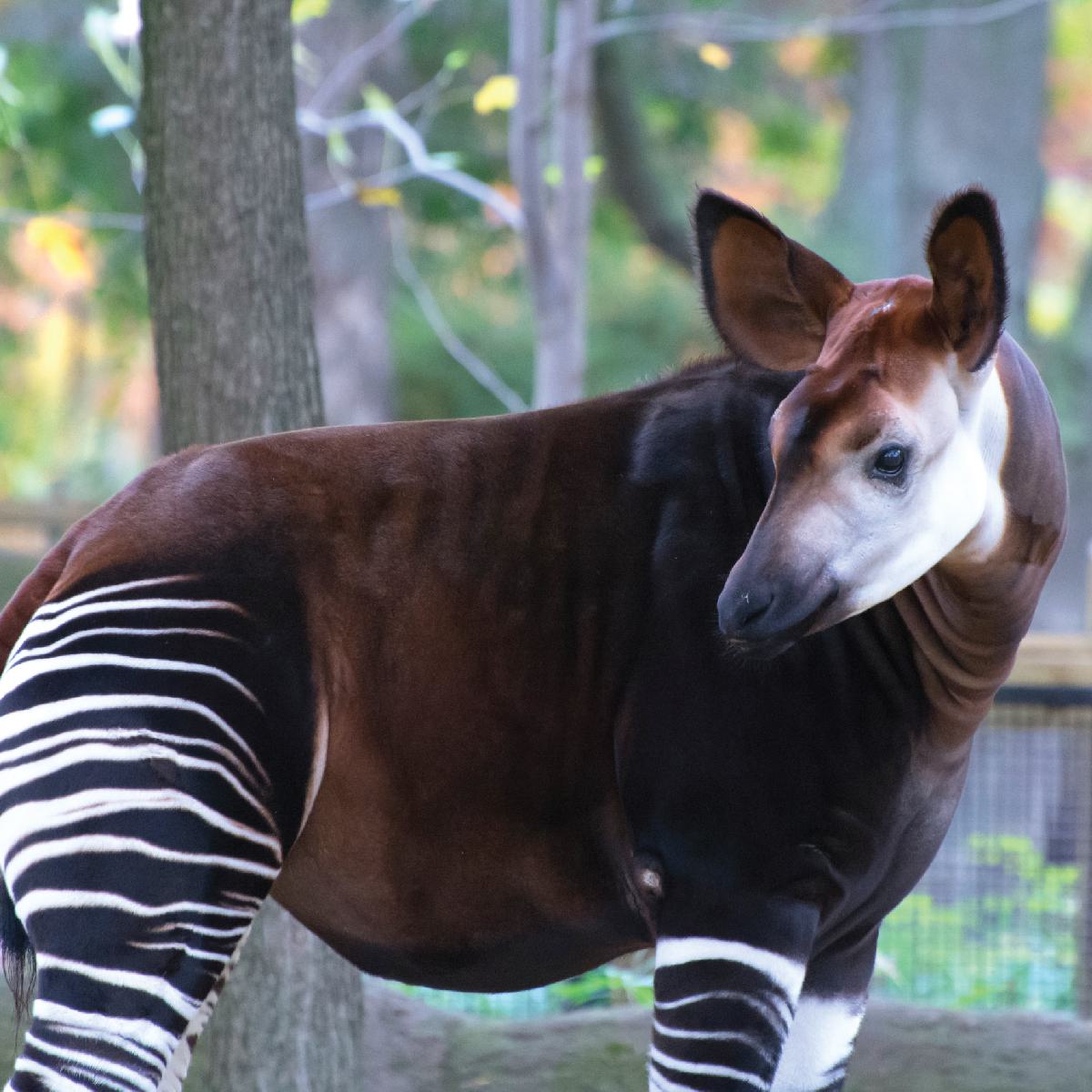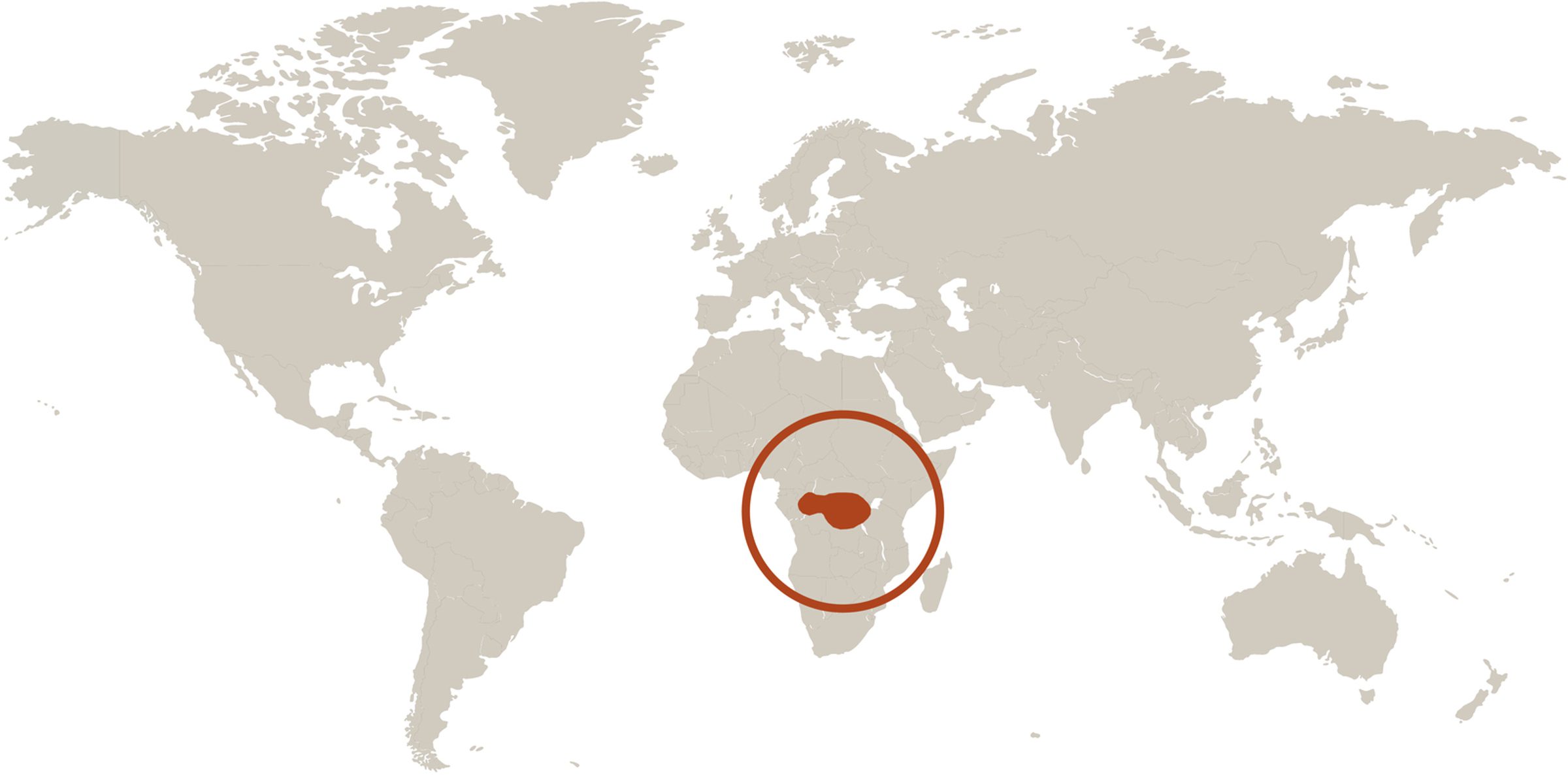
Okapi
Okapia johnstoni
Did you know?
- Although okapis have stripes like zebras, they are actually most closely related to giraffes.
- They browse on a diverse diet of leafy vegetation, including leaves and twigs.
- An okapi has a large tongue that measures 14 to 18 inches long.
- An okapi can rotate its ears independently, so it can listen to sounds in front and from behind.
- A female’s gestation (pregnancy) lasts 14 to 16 months, and usually just one calf is born.
The African Unicorn
These large hoofed mammals were not known to western science until 1901, probably because of their secretive lifestyle. Thanks to field research done by the Okapi Conservation Project, we are learning more about the natural history of wild okapis. Partly due to their secretive nature, okapis are often called, "African unicorns."
Rainforest Dwellers
Okapis live a quiet life in the lush rainforest. Their velvety dark striped coats create an almost perfect camouflage in the low light of the forest understory, and their keen hearing helps them detect predators at a far distance.
Threat Level
- Unknown
- Common
- Near Threatened
- Threatened
- Endangered
- Critically Endangered
- Extinct in the Wild
Endangered
The Okapi faces a very high risk of extinction in the wild.
Range
Uganda, Democratic Republic of the Congo
Habitat
Dense rain forest

We care about okapis
Okapis are threatened by habitat destruction, and they are sometimes killed for their meat. In some cases, the hunters are poor people who need protein to survive. Other times the carcasses are being sold to cities, where the meat is bought as a "gourmet" food.
The Saint Louis Zoo participates in the Okapi Species Survival Plan, a cooperative breeding program that helps ensure a healthy population of animals. We also support conservation efforts through the Saint Louis Zoo WildCare Institute, in close cooperation with the Okapi Conservation Project. Learn more about how we are helping wildlife around the world.
Find this animal in Red Rocks

SAINT LOUIS ZOO ZONE
Red Rocks
At Red Rocks, you’ll view some of the world’s most powerful predators living near some of the world’s most graceful prey. Tigers, zebra and giraffes all share the natural rocky boulders and outcroppings as their territory. With shading trees and a bird or two among the mammals, Red Rocks is a great place to spend a day at the Saint Louis Zoo.

